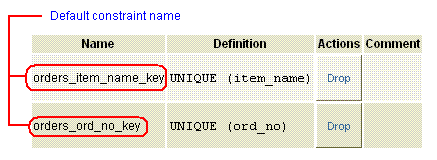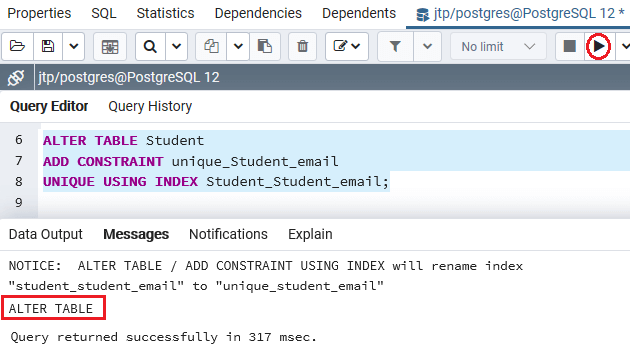
However, there are implications here that are important. We can also make it so that when a row in the radio.manufacturers table gets deleted, all associated radios also get deleted: By the way, NULL and CHECK constraints are always immediate. Conversely, you can make all constraint checks immediate. Those you can control through this setting, forcing them to be evaluated earlier in a transaction, saving unnecessary processing and rollbacks. However, some foreign key constraints may be more likely to be violated. But you can defer all of them until later in the transaction. The default for these constraints is as outlined in each section. You can directly affect when some constraints, specifically UNIQUE, PRIMARY KEY, foreign key ( REFERENCES) and EXCLUDE, are evaluated in an individual transaction. There are quite few details to this behavior, but I’ll summarize it here. In this case, before the transaction processing starts, you get a check to validate that no foreign key violation will occur.Īll this may feel like semantics, but, there is an additional behavior that you can add to your transactions within PostgreSQL. However, you can change where that check occurs by issuing the DELETE RESTRICT to the definition. So the default behavior is to find the rows to be deleted, delete them, then validate that there are no matching rows in any related tables. Let me take a moment to walk you through this diagram outlining this DELETE behavior: You can also command the default behavior by using the syntax ON DELETE NO ACTION, but I think that’s both wordy and unclear. The syntax to create a primary key is very similar to creating a unique constraint: More about this in the foreign key section. Defining your structures appropriately to properly communicate how your database is designed and how it should be used.

While you could dispense with the need for a primary key and simply define your key as a unique constraint or index, clarity is so important when it comes to code. (Even if you define a primary key column as NULL it will be changed to NOT NULL as long as no data already exists.) It’s going to be enforced by a unique index in the same manner and can be references by a foreign key constraint (which will be covered later in this article.) However, the primary key constraint is typically the columns used in a foreign key relationship, and the columns of a primary key may not allow NULL values. Primary Key ConstraintsĪ primary key constraint is effectively the same as a unique constraint, with a few minor, but important differences.
Postgresql alter table add constraint unique plus#
Of course, this is wasted space for the duplicated column and the extra index, plus the need to find an impossible value for uniqueval (and probably add a constraint to make sure that it is truly impossible.) However, almost always, implementation cost and complexity are going to be less important than data quality.

You can also do the same thing using a slightly different syntax: However, it will be marked and listed as a constraint as well as an index: The advantage to the queries that are executed is going to be the same either way. This helps to signal to people tuning your database’s queries that the index could be removed without harm, but the constraint is part of the core business rules for the database.

My rule of thumb is that a UNIQUE constraint is there to enforce that the values in a table’s column are different from one another. However, the documentation that using the unique constraint implies to the database might be important.

The question then becomes, why create a unique constraint at all? Why not just create a unique index? Well, you can truly do it either way. This is familiar to me as a SQL Server user. The way that PostgreSQL satisfies the unique criteria for the column is by creating a unique b-tree index. Running this query results in the following:


 0 kommentar(er)
0 kommentar(er)
